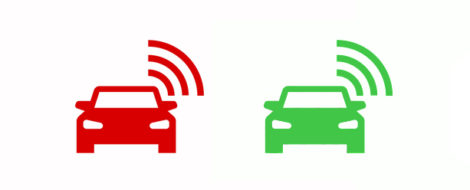Insurance based on the use you make of your vehicle has been on the market for a long time. Some insurers have even made it their trademark. A new generation of connected insurance is now competing with them. They use a black box or a mobile application to analyse your driving style. It is on this theme that we are going to look at today thanks to the market analysis provided by Geoffrey Laloux, Senior Manager at Initio.
Sommaire
- Chapter 1: Connected insurance (excluding automobile)
- Chapter 2: Connected car insurance in Europe
- Chapter 3: Belgian initiatives
- Chapter 4: Advantages and disadvantages of connected car insurance
- IntoTheMinds podcasts
Data to remember about online car insurance
- About 17% of Italian drivers have connected car insurance.
- Between 3% and 6% of car insurances on the English market are “connected”.
- The rest of Europe remains shy in the face of this new type of insurance.
Connected insurance (excluding automobile)
In addition to connected car insurance, there are other initiatives in terms of connected insurance, particularly in the field of health, with connected bracelets. Geoffrey Laloux depicts a legally complicated situation since it is considered unethical to adjust the insurance premium of clients based on their presumed state of health.
Insurers have an appetite for data. They want to receive data and establish a continuous relationship with their insured.
Connected health insurance: how does it work?
- Insurers offer a discount to policyholders who, in return, agree to be monitored
- In France, this is often a discount on taking out a contract. Discount for connected (health) insurance is therefore already accounted for when the contract is signed without the insured being fully aware of his or her state of health.
- These insurances are an opportunity for insurers to collect a lot of data rather than pricing the insurance according to the insured’s actual state of health.
- In fine, the insured benefits from his discount if he has fulfilled his share of the market. Otherwise, he will pay the price of conventional insurance.
In addition to connected insurance, numerous connected objects and systems make it possible to monitor, detect needs and prevent fraud. Geoffrey Laloux takes here the example of the real estate sector, which sees various connected solutions being added to the management of a building (smoke detectors, water leak detectors, and so on) to reduce damage and prevent certain risks. However, these elements are added to the insurance premiums. We gave an example of this in a video devoted to the start-up Shayp.
We play on prevention and on reducing the damage in case of a problem, but there is not a premium that is adapted according to the use.

Connected car insurance in Europe
In Europe, Italy stands out from the European trends concerning connected car insurance, since nearly 17% of Italian drivers have connected insurance. This behavioural insurance can allow them to benefit from a 10% to 40% reduction on their usual premium. In England, between 3% and 6% of drivers would have taken out similar car insurance. As for the rest of Europe, consumers seem to be more reticent about these new insurance premium models.
Why is the percentage so high in Italy?
In Italy, insurance premiums are very high (around 1,000 euros per year for a small-town car) as is the rate of fraud, which leads to two reactions:
- Drivers are looking for savings on their insurance premiums
- Insurers push these premiums to fight against fraud and justify their decisions to the insured (refusal, negotiations, and so on)
In comparison, Belgium and France are markets dominated by insurance brokers who partly block the market. This is not to mention the intense competition which hinders the possibility of offering substantial reductions: the -40% envisaged for specific Italian drivers cannot be provided in the French-speaking countries of Europe.
Belgian initiatives relating to connected car insurance
AXA and P&V offer connected insurance or at least behavioural insurance. AXA Drive Experience is behavioural insurance aimed at young drivers who have had their driving licence for less than 4 years. Policyholders install a box in their vehicle measuring acceleration, braking, speed and geolocation. The reduction on the insurance premium is around 20% the first year and up to 40% the following year provided that the driver is considered a “good driver”. This initiative of the AXA group is proposed by the insurance brand but also via various car manufacturers such as the PSA group or BMW.
The initiative launched by P&V is very similar and is also aimed at young drivers.
AG Assurances, for its part, is working in partnership with Proximus (telephone operator) on a 6-month research project. The aim is to equip a fleet of vehicles with connected boxes to collect data and better understand the behaviour of policyholders.
[Connected insurances] remain either niche products or concepts. There is not yet a real mainstream product.
The advantages and disadvantages of connected insurance
Beneficial for insurers and policyholders
According to Geoffrey Laloux, taking out user or behavioural insurance is beneficial for the user because it is designed to save money. In the worst case, if the insured does not benefit from the proposed discount, he or she will pay the standard premium, the one that would have had to be paid if he or she had taken out traditional insurance. Bad profiles” cannot be financially penalised via these insurances for behaviour, as long as no claim has been registered.
The risks of hacking
Geoffrey Laloux explains that, indeed, it is always possible to hack one device or another, some of them being more complicated to hack. In another article, we have covered various examples of hacking algorithms.
The possibilities of influencing the data depend mainly on the form taken by the data collection:
- via the smartphone and GPS data or 3G, 4G where it is sufficient to switch to aeroplane mode to disconnect the data collection
- via a black box installed by the manufacturer or specialist and which is connected to the vehicle’s measuring systems
The issue of piracy is also a crucial point of these connected insurances. Car manufacturers are already aware of this since many of them block access to the OBD (On-Board Diagnostics) port which records the vehicle’s history. Increasingly, access to vehicle data is done via a specific tool, a registration number, and of course must be carried out by a garage and authorised personnel. The relationship between insurers and insured parties must, therefore, be duly registered with the manufacturer and the approved garage.
These black boxes […] record parameters but they do not, in any case, allow me to control the organ that sends the parameters, so I can calculate what the acceleration of a vehicle is, but in no case can I control the acceleration of the car.
In short, the calculated data can potentially be hacked and modified but, rest assured, a third party will not be able to take control of your vehicle.
A podcast to help you develop your start-up
In 2020 we are changing the format of our podcasts. The aim is to help you develop your start-up by providing you with relevant information on specific topics.
Our podcasts are now divided into chapters of +/- 3 minutes. Each chapter is dedicated to a specific theme or development phase. You can therefore listen to the entire podcast or choose to listen to only part of it by directly selecting the part that interests you the most.
Illustrations : shutterstock
Posted in Misc..



